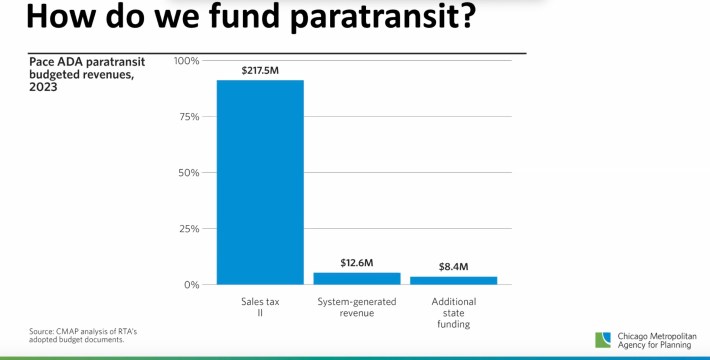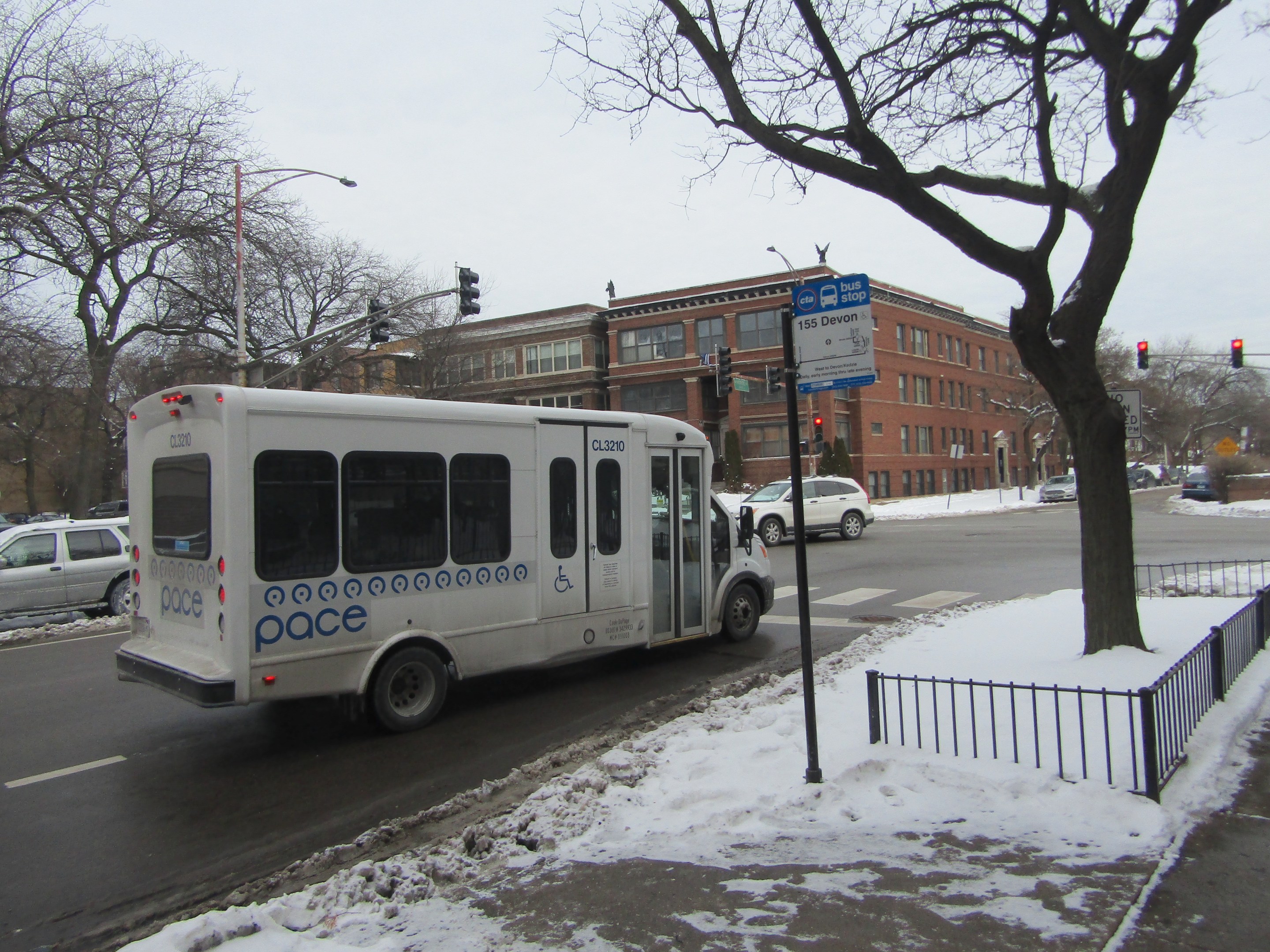
Last Thursday, the Urban Transportation Center at UIC held a public seminar on the future of paratransit in Chicagoland. Paratransit refers to transportation services offered to people with disabilities who are unable to use fixed route transit like trains and buses. The session was entitled "The Outlook for Paratransit Across Metropolitan Chicago in 2024." Speakers from the Regional Transportation Authority and the Chicago Metropolitan Agency for Planning discussed how to sustain and improve mobility options for all.
Jaemi Jackson, accessible communities program manager for CMAP, stated that 25 percent of the population has a disability and 16 percent of those people have a disability that affects their mobility. "Within our region and Northeastern Illinois, we know that up to five percent of people have some sort of disability that impacts their movement," she said. "We also know that as we age, the possibility of having a disability increases. The older you get, the more likely you are to experience a disability in your lifetime."
Jackson named everyday mobility barriers faced by people with disabilities, such as large puddles, improper crosswalk signage, and poor sidewalk maintenance. Jackson then discussed CMAP’s new Accessible Communities Program, launched to help local governments improve compliance with the Americans with Disabilities Act—the federal law prohibiting discrimination against people with disabilities. According to the ADA, local governments must conduct a self-evaluation and create a transition plan for programs, services and facilities that are not compliant with the law.
"I think a lot of the issues that we're dealing with is a lack of awareness and education," Jackson said. "The ADA has been in place for 34 years and, based on our data, only 40 communities out of 284 have a plan in place. We have a long way to go. And we need a better understanding of what the requirements are. Part of that is that data collection." Jackson said CMAP is providing technical assistance to communities throughout the region to develop public right of way transition plans.
Although ADA compliance is a federal requirement, the federal government does not provide funding for paratransit. Nikolas Merten, a policy analyst at CMAP, said that due to a combination of increased demand and other cost increases, the price tag on paratransit has increased significantly since 2007.

Merten said there are three ways to strengthen paratransit, "ideally, at the same time. On the funding side, the state could come in and fully fund paratransit services, which would alleviate the fiscal burden that the region faces, especially as we approach the fiscal cliff."
Merton was referring to the $730M budget shortfall anticipated in 2026, when federal pandemic relief dollars for public transportation systems nationwide run out. Merten said federal funding for paratransit was a recommended in CMAP’s Plan of Action for Regional Transit, which introduces strategies to address the looming budget gap. The RTA sales tax is currently the primary funding source for paratransit and provided over 90 percent of funding in 2023.

Merton continued, "Another way to address paratransit funding is to bend the paratransit curve. There are two ways to do this. We can innovate to provide paratransit services more efficiently than we do now. And we can provide alternatives that shift some demand from paratransit to more cost-efficient modes. We need accessible train stations and bus platforms. And we also need accessible pedestrian infrastructure so that people can get from their front door to a bus stop or a train station if they choose."
Katie Garrity, mobility outreach coordinator for RTA, then talked about programs offered to people with disabilities, lower incomes, and older people, including Metra’s new reduced fare Access Pilot Program.
Kendra Johnson, an associate on the RTA government affairs team, drove home the severity of the funding crisis staring down Chicagoland's entire transportation system. "We’re facing an operations gap of about 20 percent of the regional transit budget due to chronic underfunding of the system, as well as changing travel patterns following the pandemic. The language in the agenda centers on the structural shifts that are required to address the operations gap, maintain service levels, and avoid dramatic fare increases or painful service cuts. And we know that closing the current budget gap would only return the system to 2019 service levels. The agenda also highlights the $1.5 billion in total new annual investment required to expand and improve service consistent with regional priorities."

Did you appreciate this post? Please consider making a tax-deductible donation to help Streetsblog Chicago keep publishing through 2025. Thank you.




